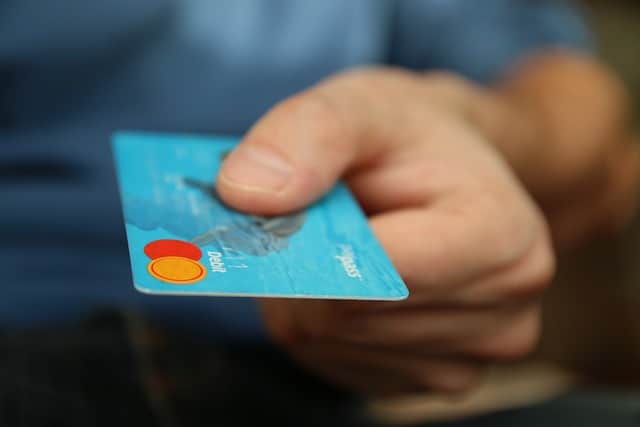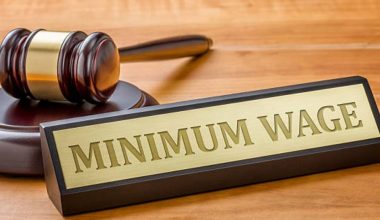Your monthly credit card statement summarizes your spending and the total amount outstanding. However, among the information are references to your card’s APR — or annual percentage rate. When you hold a balance on a credit card, APR usually comes into play. However, some transactions, like as cash advances and late payments, are subject to APRs that may be higher than your regular rate.
Discover how credit card APRs work, when an APR may be charged, and how excellent financial habits might help you avoid paying interest entirely.
What is APR?
The annual percentage rate (APR) of a credit card is the cost of borrowing. It refers to the annual interest rate plus any fees linked with the card if you carry a balance. The APR on credit cards frequently varies. For example, you could have one card with a 9.99% APR and another with a 14.99% APR.
How Does APR Work?
When you have a credit card balance, you usually have to pay interest on it. Credit card issuers consider your credit score when calculating your APR, with a higher credit score often resulting in a cheaper interest rate. A lower APR is usually preferable because it costs less to borrow with a specific credit card.
Although almost all credit cards carry an APR, you are not usually required to pay it. Most credit cards feature a grace period during which you can pay off the bill in full without incurring interest.
When you use a credit card to get a cash advance, you must also pay interest and fees, which are normally higher than the APR on your standard balance.
Types of APR
Many credit cards feature variable APRs dependent on your actions, such as making a purchase, executing a balance transfer, obtaining a cash advance, and so on. Each APR operates as follows.
- Purchase APR: The interest rate applied to new purchases.
- Balance transfer APR: The interest rate applied on balance transfers, which may be the same as or higher than the purchase APR.
- Introductory APR: Many credit cards provide introductory APR periods in which no interest is charged for a specific time (up to 21 months). You may benefit from no interest on new purchases, balance transfers, or both during the introductory 0% APR period. These offerings are an excellent way to save money on interest and get out of debt.
- Cash Advance: The interest rate you will pay if you take out a cash advance. This rate is frequently among the highest APRs available, and cash advances accrue interest instantly with no grace period.
- Penalty APR: If you pay late, card companies may charge you with a higher interest rate than your standard APR.
Variable vs. Fixed-rate APR
Credit cards sometimes contain variable APRs, which means your rate might change over time. Variable APRs are linked to an underlying index, such as the federal prime rate, which is the lowest interest rate banks will lend money. If the prime rate rises, your card’s APR rises as well, and vice versa if the prime rate falls.
A fixed-rate APR, on the other hand, will remain constant from the time you start the credit card account.
What is a Good Credit Card APR?
A good credit card APR is determined by several things. A 0% APR is wonderful, but it can be difficult to find unless you open a card with a special promotional APR. In that instance, the APR will not remain 0% in perpetuity.
Look at the average rates for people with the same credit score as you to see if an APR is reasonable. An APR of 20% may be appropriate for someone with a decent or very good credit score, whilst a 12% APR may be appropriate for someone with an excellent credit score. If your credit score is low, a 25% APR may be acceptable. The lower the APR, regardless of your credit score, the better.
How Do You Calculate APR?
You can use the APR on your credit card to calculate how much you may have to pay on a balance. To do so, calculate the daily periodic rate, or how much credit card interest you are charged per day on your balance.
Assume you owe $1,000 on a credit card with a 20% APR. Here’s how to calculate how much you’ll have to pay:
- Divide 20% by the number of days in a year, 365: 0.2/365. As a daily rate, you will receive 0.0548%.
- Multiply the daily rate by the outstanding balance: 0.0548% x 1,000. You will receive 0.548, or approximately 55 cents per day.
- To calculate your monthly payment, multiply the daily rate by the number of days in your billing cycle. Multiply 0.55 by 27 if you have a 27-day billing period. Monthly interest on a $1,000 balance at a 20% APR is $14.85.
Can APR Help Me Figure Out How Much I’ll Have To Pay?
Calculating how much you’ll spend in pounds each year might be tricky, particularly when it comes to credit cards. This is because credit cards offer flexible repayments (you can pay back more one month than the next as long as you pay at least the minimum amount), and your provider will normally compute interest on a monthly or daily basis. As a result, the amount of interest you pay each year is determined by how your balance fluctuates during the year.
For example, if you pay off your credit card debt in whole and on time every month, you will not pay any interest – regardless of your APR.
So, while APR is an excellent method to compare credit cards, keep in mind that what you pay in interest is determined by how and when you pay off your debt.
What are the Distinctions Between Representative and Individual APR?
Representative APR
The representative APR is the quoted rate that at least 51% of individuals who are approved for the credit agreement will receive. That means that nearly half of those authorized for the deal may be ineligible for the stated rate and may have to pay more.
Personal APR
A personal APR is the rate you are offered; it may be the same as the typical rate or higher, depending on your eligibility. The lender will normally determine what rate to provide you depending on how well your credit and financial information match their requirements.
APR vs APY
While APR is the amount you owe on a balance, annual percentage yield (APY) is the amount of interest a savings account can produce per year.
The interest rate on an account, as well as how frequently interest compounds on the account, are both included in the APY. While you want an APR as low as feasible, you also want an APY as high as possible because it allows you to earn money.
What Your APR May Cost You
The good news is that if you pay your debt in full and on time every month, no interest is added to your account. That way, you can take advantage of the grace period that most credit card companies provide to cardholders. This is often a 21-day period beginning after the billing cycle during which you can pay off your new balance without being charged interest.
However, if you carry a balance on your card, you will be charged interest. Even if you just carry a balance for one month, you will forfeit your grace period for the next many months. The amount of interest you pay is determined by the APR on your card, the size of your balance, and the size of your monthly payment.
In 2022, the average American’s credit card load was $5,910, and Bankrate predicts that the average credit card interest rate is currently slightly under 21%. Understand that credit card interest compounds, which means that it grows larger the longer you keep a balance on your card.
Here’s how making merely the minimum payment can affect your interest costs at various APRs.
| Minimum monthly payment | Months to payoff | Total interest charges | |
| $5,910 at 17% APR | $177.30 | 46 months | $2,145 |
| $5,910 at 21% APR | $177.30 | 51 months | $3,037 |
| $5,910 at 28% APR | $177.30 | 66 months | $5,652 |
If you think you’ll need to carry a debt on your card, try Bankrate’s Credit Card Payoff Calculator to see how much interest you’ll wind up paying if you only make the minimum payment. You can also see how much money you can save by increasing your monthly payment.
How to Reduce Credit Card Interest Payments
Using a credit card to make a purchase is convenient, especially if you’re trying to build credit or get rewards – but interest charges can cost you a lot of money in the long run.
Here are some tips for saving money on credit card interest now and in the future:
- Each month, pay your bill in full. Most credit cards have a grace period that begins on the final day of your billing cycle and ends on the date your payment is due. If you pay off your statement balance before the grace period expires, no interest is applied on those purchases. Most credit cards allow you to set up automatic payments so you never miss a payment.
- Pay your bill as soon as possible. You do not have to wait until the end of your monthly cycle to make a payment. You can reduce revolving balance interest costs by paying your credit card account on time and lowering your average daily balance throughout the month.
- Apply for a balance transfer credit card. Do you already have a lot of debt? Consider shifting your amount to a credit card with a 0% introductory APR period. The top debt transfer credit cards provide 0% interest for up to 21 months before the usual APR kicks in.
- Request a cheaper rate. Call your credit card company and request a reduced interest rate. Of course, before you call, make sure you are aware of your current APR, statement due date, and any current debt.
Is APR Necessary If You Pay In Full?
If you pay your credit card debt in full and never pay interest, your APR will not affect you. Other expenditures linked with credit cards, such as yearly fees, should still be considered.
How Do Credit Card Issuers Calculate APRs?
When setting an APR, credit card issuers analyze a consumer’s credit score, and consumers with the best credit tend to earn interest rates at the lower end of the scale indicated with any type of card. Credit card APRs are often variable, which means that issuers may raise or lower the APR as the federal prime rate rises or falls.
Conclusion
If you have a credit card, you must understand what APR is and when it may apply to you. You won’t have to be concerned if you don’t intend to carry a balance on your credit card. However, if you must carry a credit card balance, knowing your APR will make organizing your monthly credit card payments much easier.
- What Is A Good Interest Rate On A Credit Card? (Updated)
- $2000 LOANS: What to Know About Getting a $2000 Loan With No Credit Check
- FINANCE CHARGE: What Exactly Are Finance Charges? Why Are They Important?
- HOW IS APR CALCULATED? Best Easy Guide & All You Need






